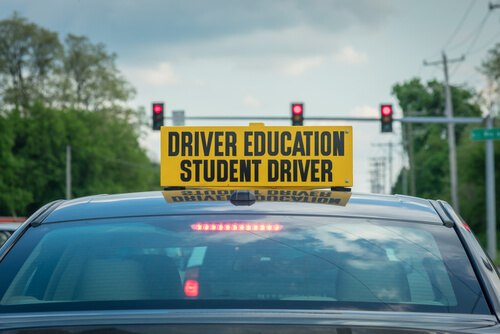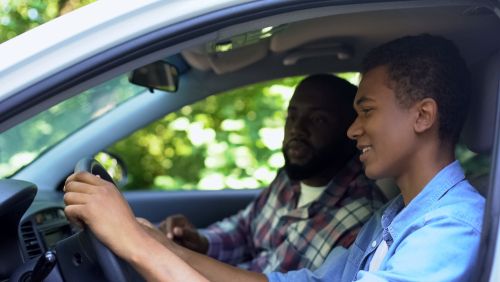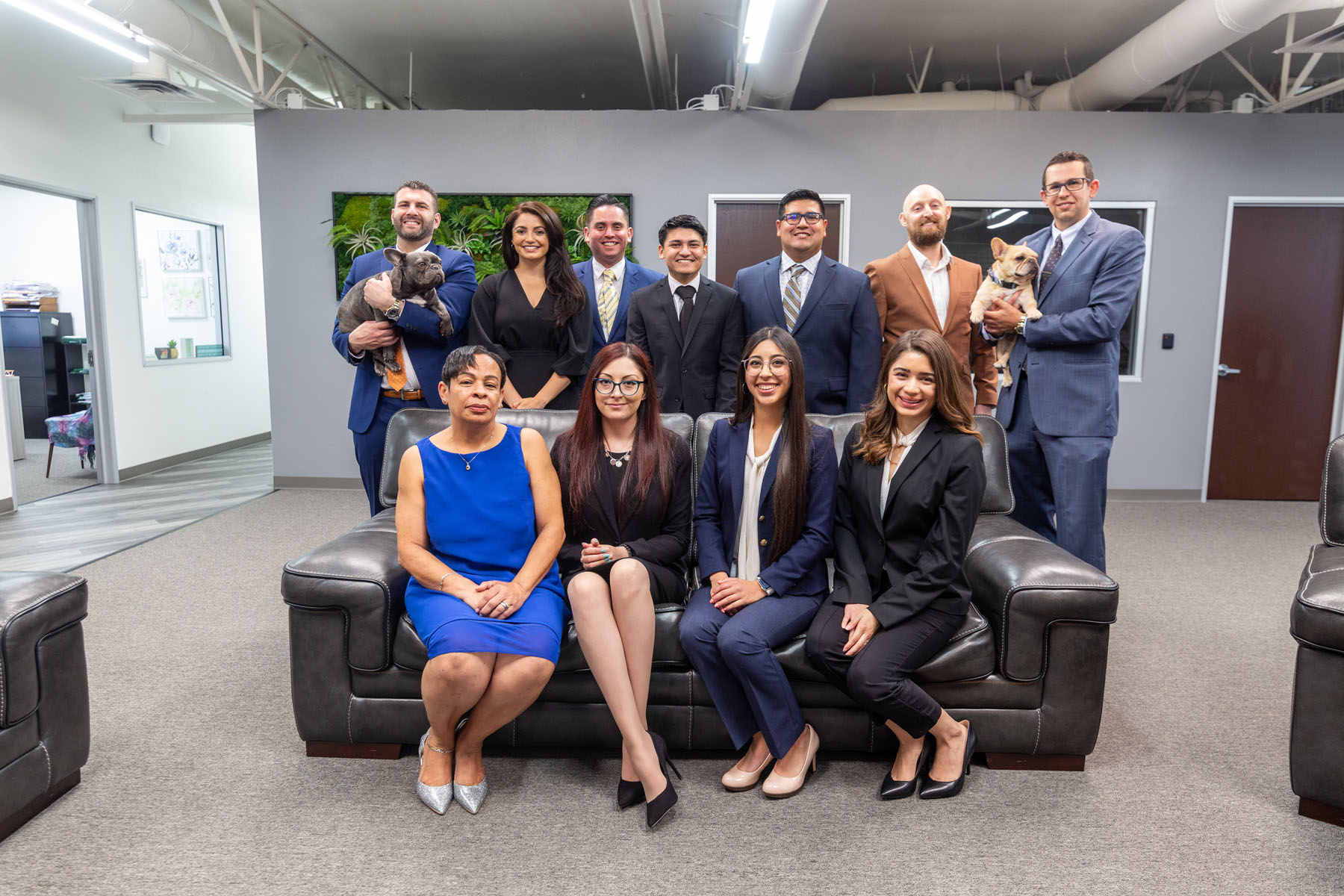Driving is an important skill that you will utilize more and more as you travel daily for work, school, or an events on your social calendar. Before you can take to the road, though, you need to become adept at this everyday activity, and that typically means that you will require a learner’s permit at some point.
The Importance of Proper Driving Education
The road can be a dangerous place for even the most experienced drivers. Teenagers are even more at risk, however.
Around 300,000 teenagers received treatment from emergency departments as a result of the injuries they received from vehicular accidents. Sixteen to nineteen-year-olds are at a higher risk to have vehicular accidents compared to those in other demographics.
Inexperience and several other factors contribute greatly to why teenage drivers are at such risk. That means that teenage drivers need to be extra cautious whenever they are behind the wheel. Better education would also help a lot in that regard.
Still, there is no substitute for firsthand experience. You will need to experience what it’s like to be on the road if you want to get better at driving. The learner’s or driver’s permit will help with that, so let’s take the time to find out more about it.
What Is a Learner’s Permit?
A learner’s permit is known by many names. Some may call it a driver’s permit while others may go with a provisional instruction permit or provisional license. Now that you know all those terms are referring to the same thing, you should realize you only need one thing if you want to start learning how to drive.
They usually require a permit for individuals who want to start driving but have yet to reach a certain age. In some states, the age isn’t even a consideration. You must obtain a driver’s permit before you can get your hands on a valid driver’s license.
You can do a lot with a driver’s permit. That permit will allow you to go on public roads and highways, which is crucial because you will be spending the bulk of your driving time on them.
It is worth noting that the permit and the driver’s license are not the same things. In fact, there are various restrictions placed on learner’s permits that are always set in place to keep the people who have them and other drivers on the road safe.
We’ll get into those differences a bit later. First, let’s take a look at the process of securing a learner’s permit.

The Requirements for Obtaining a Learner’s Permit
The learner’s permit is supposed to give teenagers a chance to start learning this valuable skill as early as possible but know there are still limits on how old you should be before applying for one.
Age limits vary by state.
Fourteen is the youngest at which you can obtain a driver’s permit. Only a few states set the age limit that low and they are Alaska, Arkansas, Iowa, Kansas, North Dakota, and South Dakota. Some states will require you to at least be fourteen and a half or fifteen-years-old before you can get a permit.
If you are sixteen, you can get a learner’s permit regardless of which state you live in.
Teenagers under the age of eighteen who want to get their permit will also need to secure written and signed consent from their parent or guardian. You must also fill out and submit an application form for your learner’s permit along with documents that prove your identity and your address.
Once you submit those requirements, you can now move ahead to the exams they include with the application process.
They will test your vision to determine if you can see well enough to be allowed to operate a vehicle. Applicants will also have to pay for and pass a written exam to get their permit.
Passing a driver’s education course is another requirement for obtaining a driver’s permit. Depending on your state, though, you could bypass this requirement if you are at a certain age.
Here’s a summary of the learner’s permit requirements:
- You must meet the age limit in your state
- You must have the written and signed consent of your parent or guardian if you’re under eighteen
- You must fill out and submit an application form
- You must provide documents proving your address and identity
- You must pass a vision exam
- You must pass a written exam
- You must complete a driver’s education course
As you may have noticed, there is no driving test included among the requirements for the permit. Since the people applying for the permit are still learning how to drive, asking them to pass a road test would be unrealistic. The driving test is something you will do when you are going for your driver’s license.
You can start the application process for your driver’s permit by heading over to your local DMV. In some states, you can apply for the permit online. Check how the process works in your state if you want to save as much time as possible.
How Does a Driver’s Permit Differ from a Driver’s License?
Beyond the requirements needed to get them, the driver’s permit and driver’s license differ from one another in some pretty significant ways. Let’s take a closer look at those differences, so they don’t catch you off guard once you start learning how to drive.
Companion Requirements
If you have a driver’s license, you don’t need to worry about finding someone who can ride along. You can hop into your car, start driving, and not worry about whether you have a companion or not.
The same is not true if you only have a learner’s permit.
Regardless of where you live, you must have an adult accompanying you if you are going for a drive with only a permit. Adult in this context means someone who is over nineteen-years-old, although there are states where the age of the accompanying adult must be higher.
Also, the person accompanying you during your drive must possess a valid driver’s license.
There are some exceptions to that rule, though.
The law may allow you to drive alone with only a learner’s permit if you are heading to an important appointment, to school, or your place of employment. You can’t stay on the road for long, however, and you usually must have some form of written consent from your parent or guardian before driving solo.
Passenger Limit
As long as you’re not exceeding the maximum capacity of your vehicle, you can take passengers along with you if you have a driver’s license. The same is not true for those who are only using a permit.
Only a few states will allow drivers on permits to have passengers tag along. In most cases, the only passenger you can have with you is the adult with the driver’s license.
Location Restrictions
The limitations on where you can drive if you are on a learner’s permit are not restrictive. The permit is enough to drive around your state.
Limitations only come into play if you intend to drive outside of your state. Because states have different requirements relating to who can acquire a learner’s permit, they can’t guarantee that the documentation you have will be valid once you cross state lines.
Stay in the state if you are going to drive on your learner’s permit or check the requirements in the neighboring state first before making the drive.
The Aftermath of an Accident for Those Are Using a Driver’s Permit
Accidents happen. They happen to inexperienced drivers as well as the ones who have spent many years on the road.
But what happens if you’re a teenager with only a learner’s permit and you get involved in a car accident? What kind of penalties could you face, and how does insurance get involved in all of this?
The Importance of Insurance for Young Drivers
If you’re on the road in a private car, the expectation is that you have the vehicle covered by some form of auto insurance. Even if you are using a learner’s permit, auto insurance is still something you need to have.
Chances are the vehicle does not belong to you, and that means the auto insurance is not under your name. That is fine and you can continue driving knowing that the insurance will cover the damages that result from a potential car accident.
If the car does not have auto insurance, it would be best if it stayed in the garage. The troubles that could stem from being involved in a car accident with no insurance would be huge, and they could put your parent or guardian in a financial hole.
Note that auto insurance may not cover everything. If there are additional expenses that exceed the coverage, your parent or guardian may have to pay for that.
Also, getting into an accident could lead them to revoke your learner’s permit. The chances of this happening are higher if you are driving under the influence of a substance or engage in something such as texting before the accident.
What to Do if a Teenage Hits Your Car on a Driver’s Permit
Let’s look at things from a different perspective. In this scenario, you are driving along when a teenager crashes into your car, causing damage in the process.
What should you do next if you want to secure compensation?
Once the authorities determine the younger driver was the one at fault, you can ask them about their insurance. Their policy should cover the financial cost of repairing your vehicle.
If the party’s auto insurance cannot cover the financial cost of the repairs, you can go ahead and file a claim with your uninsured or underinsured motorist policy.
There’s a chance that the compensation you receive from the other party’s insurance and uninsured or underinsured motorist policy is not enough to cover everything you need, especially if the accident caused injuries.
In that case, you may need to file a lawsuit. Remember that because the driver responsible for the accident is still underage, you should not file your lawsuit against him/her. Instead, your lawsuit should be seeking compensation from the teenager’s parents or guardian.
Figuring out exactly what you need to do after being involved in an auto accident with a teenage driver on a learner’s permit is not easy. Make sure to consult with a lawyer first before you act.

Safety Tips for Teenage Drivers
Driving is a whole new experience if you’re a teenager. To ensure that you and others sharing the road with you can stay safe, feel free to heed the tips listed below.
- Avoid distracted driving, keep your smartphone away from you when you’re behind the wheel
- Drive carefully and maintain a moderate speed
- Steer clear of any drinks or substances that can alter your state of mind before driving
- Don’t take to the road while you’re feeling stressed
- Follow basic road safety rules such as wearing your seatbelt and using your turn signals
Get in Touch with an Attorney if You’re Involved in a Car Accident
Dealing with the aftermath of an auto accident is not easy, regardless of whether you are the one who caused the accident or the victim of one. Find out how to proceed by contacting an attorney now. The professionals at Batta Fulkerson will help you figure out this complicated situation.




